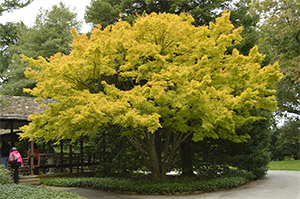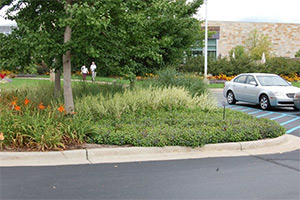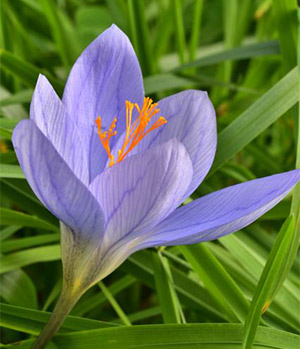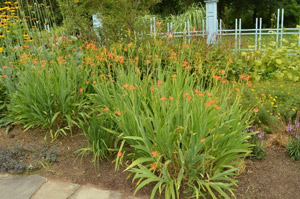 A Seasonably Fashionable Maple for the Holidays
A Seasonably Fashionable Maple for the Holidays
December always conjures up images of preparing for the Holiday season. With cookies needing to be baked, packages wrapped and family and friends visiting from afar, there is little time to focus on the garden. It is a shame, since there are a number of plants that look seasonally fashionable and retain their cheerful colors throughout the winter. A tree I have always deemed most appropriate for the season is the Coral Bark Japanese Maple or Acer palmatum ‘Sango-Kaku’.
Welcome to Crawford's Corner!
Gardening Notes for November 2023
 November is here! The cool to cold nights of October, combined with the ample rainfall has allowed most of our trees to erupt into a bonanza of spectacular colors. In addition, the soil is adequately moist to bring plants safely into the start of winter without the worry of drought. The light to heavy frosts of October have started to impact our annuals but very soon, they will need to be removed with the onset of truly cold weather. Even though the weather is becoming cooler, there is still much to do in the Garden before it can be put to bed for winter!
November is here! The cool to cold nights of October, combined with the ample rainfall has allowed most of our trees to erupt into a bonanza of spectacular colors. In addition, the soil is adequately moist to bring plants safely into the start of winter without the worry of drought. The light to heavy frosts of October have started to impact our annuals but very soon, they will need to be removed with the onset of truly cold weather. Even though the weather is becoming cooler, there is still much to do in the Garden before it can be put to bed for winter!
November 2023 Plant of the Month – Ceratostigma
 Ceratostigma – Practical and Beautiful
Ceratostigma – Practical and Beautiful
I am a huge proponent of ground covers. They are very practical plants providing color and texture for the ground plan while also helping to reduce or in a few cases, eliminate weeding – an attribute every gardener can appreciate! Surprisingly, or at least to me, there appears to be a diminished interest in groundcovers with more homeowners preferring mulch over plants.
Gardening Notes for October 2023
 October marks the true start of autumn and much work for the gardener! It is now a race against time to complete our chores before that first heavy frost. September was a fairly dry month, so watering chores are certainly high on the list, especially for new plantings! Always remember to take a moment and make some notes about your garden. Among other details, take note of what annuals are still looking respectable, which late season vegetables are living up to expectations, and perhaps what woody plants or perennials should be added to enhance the autumn garden for next year!
October marks the true start of autumn and much work for the gardener! It is now a race against time to complete our chores before that first heavy frost. September was a fairly dry month, so watering chores are certainly high on the list, especially for new plantings! Always remember to take a moment and make some notes about your garden. Among other details, take note of what annuals are still looking respectable, which late season vegetables are living up to expectations, and perhaps what woody plants or perennials should be added to enhance the autumn garden for next year!
October 2023 Plant of the Month – Blackberry Lily
 Blackberry Lily – An Iris for Many Seasons
Blackberry Lily – An Iris for Many Seasons
One of the botanical issues I have recently begun to struggle over is the seemingly endless number of plants undergoing a name change. The changes are certainly understandable since science now allows botanists to evaluate genomes and better align plants with the proper family or genera. Yet, learning new plant names is always a challenge and leads to confusion for both nurseries and gardeners. One plant that has proven to be particularly troublesome is Iris domestica, commonly called Blackberry Lily.
- « Previous Page
- 1
- 2
- 3
- 4
- 5
- 6
- …
- 19
- Next Page »



